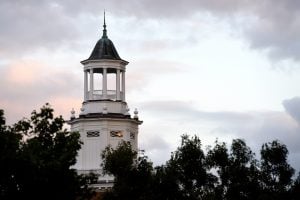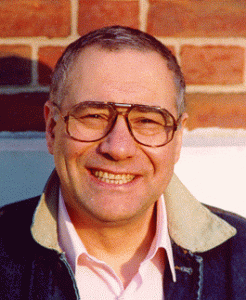

Alexander Kaplan
Alexander Kaplan, who served as a professor in the Department of Electrical and Computer Engineering for almost three decades, died on Dec. 31 in Boca Raton, Florida at the age of 81.
His former coworkers and students remember Kaplan as being a passionate scientist who was also a good teacher.
“It didn’t matter which course he was teaching, the students would always enjoy it,” ECE Professor Jacob Khurgin said. “He had unique methods for teaching quantum mechanics, and it was always a different sort of experience being in his classes. Alex was a thorough lecturer, but he always had time to tell stories and make it fun.”
Kaplan, a native of the Soviet Union, came to the United States in 1979. Before joining Johns Hopkins in 1987, he worked as a research staff member at the Massachusetts Institute of Technology and as a professor at Purdue University. He retired in 2016, but remained involved with the department as a professor emeritus.
Kaplan’s research focused on the areas of nonlinear optics and quantum electronics. He made pioneering contributions to the fields of very-high order sub-harmonics generation, self-bending effect, nonlinear interfaces and optical bistability, hysteretic and multi-photon resonances of a single trapped electron, light-induced non-reciprocity, soliton physics, X-ray nonlinear optics, sub-cycle sub-femtosecond pulses, shock waves in nanoclusters and relativistic nonlinear optics.
He was a fellow of the Optical Society of America, and won the Max Born Award in 2005 for contributing to physical optics over a distinguished career. According to Google Scholar, other researchers have cited Kaplan’s work close to 6,000 times.
“Alex was a very good scientist and he performed groundbreaking work that pushed the boundaries of real short time scale physics,” ECE Professor Emeritus Frederic Davidson said. “He always looked to interact with and learn from people who were performing innovative research.”
Before coming to the United States, Kaplan was a political activist and dissident protesting the Soviet government. However, once the country opened to allow return visits by those that had left, he was reportedly among the first scientists invited to give a talk about their research.
Kaplan also worked hard to create a community with other scientists who had emigrated to the West from the Soviet Union. Intending to connect Russian-speaking people in the West for informal communication, he started an email list with only 40 addresses. That group would eventually grow to comprise of more than 1,200 people.
“He ran the group personally and took a lot of pleasure from it because it was something a lot of people used and enjoyed,” said Khurgin, who is also a native of the Soviet Union. “As a result, a few people began to jokingly call him the ‘unelected head of Russian physicists in exile.’”
Away from the classroom, Kaplan is remembered for his prodigious carpentry skills. According to Khurgin, when Kaplan came to the United States, among the few possessions he brought were his carpentry tools. His Barton Hall office was well known among the faculty and students for showcasing beautiful pieces that he had handcrafted.
Davidson, who as department head lobbied to bring Kaplan to Johns Hopkins, remembers him as someone who helped raise the profile of the ECE department.
“His research was fundamental, pioneering work that very few others were doing. As a result, Alex’s work was published in the best places, meaning everyone in the field read it and knew who he was,” Davidson said. “Back in those days at conferences, when people would say what schools and departments they were from, you would either go ‘I don’t know anyone there,” or that you knew someone. It was almost an indicator of how strong your department was. Whenever our faculty would go to conferences and say they were with Johns Hopkins ECE, people would immediately mention Alex. He brought a lot of academic notoriety to our department and helped us raise our profile tremendously.”